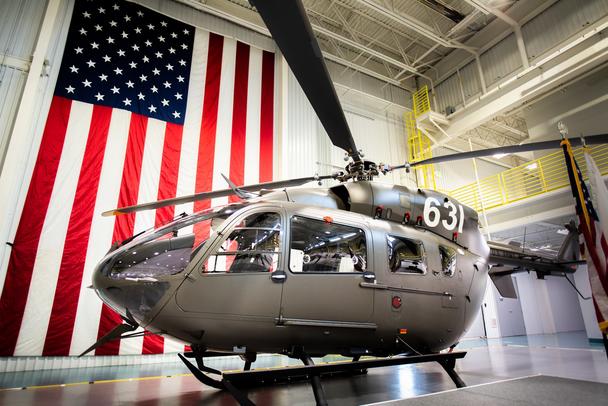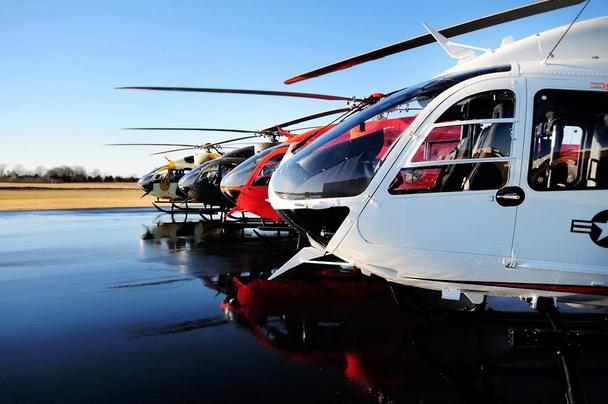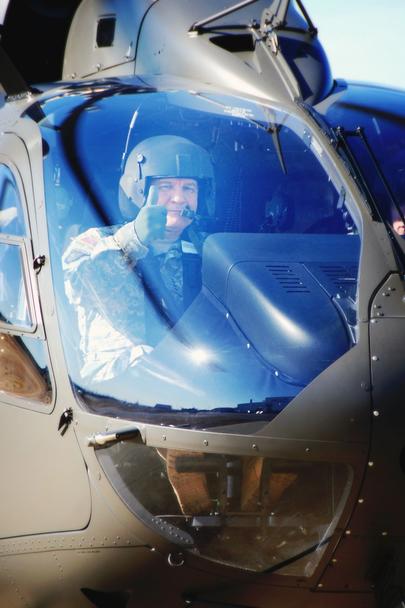463 and counting on-time Lakota deliveries to the U.S. Army

It was a day of celebration when the U.S. Army announced the selection of Airbus’ (then American Eurocopter’s) helicopter as its new light utility aircraft of choice to replace the UH-1H Iroquois and OH-58 A/C Kiowa helicopters. On June 30, 2006, the Army chose the Lakota because it best met the military’s commercial off the shelf (COTS) acquisition strategy in a highly competitive market. The aircraft was to be the “workhorse” of the Army’s helicopter fleet, supporting MEDEVAC, search and rescue, troop transport, training, disaster relief, and surveillance missions.
The Lakota, which was to be built at the company’s Columbus, Miss., production facility, provided the operational capability, reliability and affordability the Army was seeking to fulfill its requirements for speed, endurance and overall performance.

The first aircraft was delivered to the Army on December 11, 2006, and the Army christened it Lakota UH-72A, following their longstanding tradition of honoring native American tribes in naming their helicopter fleets. In front of an audience of 300 employees and community supporters, Airbus executives welcomed Mississippi’s highest elected officials to the stage along with Gen. Richard A. Cody, Vice Chief of Staff of the Army, and Joe Redcloud, Chief of Staff of the Oglala Lakota Tribe.
“That first delivery was significant,” recalls Ben Sullivan, Airbus Helicopters Senior Manager of Production. “I had started with the company about 18 months before as an Aircraft Technician after serving in the Marine Corps for five years. It was exciting to see a new program taking hold and to know this was my future.”
While the first Lakota was being built, new construction was underway at the Columbus facility. Two buildings were added which housed the new full assembly production line, state of the art paint facility and new flight line. The additional 229,000 square feet increased the plant size more than threefold, and approximately 150 employees were added. All would be needed to meet the Army’s rigorous requirements.
“Airbus chose to make a significant investment in Columbus, Mississippi when we created our production facilities as we identified this area as a place that would help foster success, thanks to a capable and diverse workforce, strong state and local partnerships, and an economic development opportunity ready to support growth,” said Romain Trapp, president of Airbus Helicopters North America. “Columbus has proven to be a key factor for our continued success in the Lakota program, helping us deliver on our commitments to the U.S. Army.”
In 2008, the U.S. Navy, seeing the versatility of the Lakota, added to the production workload by ordering five for their test pilot training program at Naval Air Station Patuxent River in Maryland.
“The program was in peak production by 2010 with five aircraft a month being delivered, meaning nearly 60 per year,” Sullivan shares. “The assembly line was full. The pace was fast. There was never a lull.”
It was that same year that the Army awarded the Security & Support Battalion (S&S) contract, calling for 20 new aircraft and the retrofit of 16 that were already in service. The retrofits involved adding a state-of-the-art surveillance package for both day and night operations. Today the S&S Battalion boasts 107 Lakota aircraft in its fleet.
In 2013, the course of federal budget negotiations did not seem promising for the Lakota program. As the community rallied to show support and Mississippi’s congressional leaders went to bat for the program, the Army was conducting an Aviation Restructuring Initiative. Through that process, the Army recognized that the Lakota was the right solution for replacing their very aged training aircraft at Ft. Rucker, Ala. Over the years, that program has grown significantly, and at present, 205 Lakota helicopters reside there.
“The Lakota has had a big impact on the National Guard’s ability to respond to disasters and other civil emergencies as well as enabled the Army to train the next generation of pilots to fight and win wars,” states the U.S. Army Product Manager for the UH-72A, LTC William Cabaniss. “Airbus has been a fantastic partner.”
As the Army continued to find even more uses for the Lakota, other countries were taking notice. In 2014, Airbus delivered the first of six aircraft to the Royal Thai Army through the United States’ Foreign Military Sales initiative.
Through the years, Airbus celebrated numerous milestones leading up to its 463rd UH-72A delivery, paying tribute to those who helped achieve the milestones of 100, 200, 300, and 400 deliveries. Today, the company celebrates the 463rd Lakota UH-72A delivered on time, on cost and on quality to the Army. This milestone marks the beginning of a new chapter for Airbus, as the teams prepare to usher in the Army’s latest, more modern variant that will enter service in 2021: the UH-72B.
“We are ready to begin building the new UH-72B model in Columbus. We’ve installed the new testing equipment, and our employees have been trained to build this newer, more advanced model,” shares Trapp. “This is the future for the Army. The UH-72B Lakota features a more efficient Fenestron tail rotor, more powerful engines, enhanced controls and the Airbus Helionix avionics suite. The beauty of the COTS program is that the Army is receiving the benefits of Airbus’ product improvements and enhancements through the evolution of the aircraft, without investing any government money.”

Seventeen of the new UH-72B model are currently on contract, with deliveries beginning in 2021.
The Army has flown more than 800,000 flight hours in the UH-72A aircraft. Through the support of hundreds of employees, years of dedication, and the installation of some 857,475 parts – Airbus Helicopters is ready to build on the legacy of excellence it has achieved with the customer over the years.
“It’s been an honor to work on the UH-72A program,” says Sullivan, who has seen his career advance along with the Lakota program. “And I look forward to continuing to serve the Army in the future. We’ve been very successful together, and I’m ready to see them flourish with the added capabilities the UH-72B will afford them.”